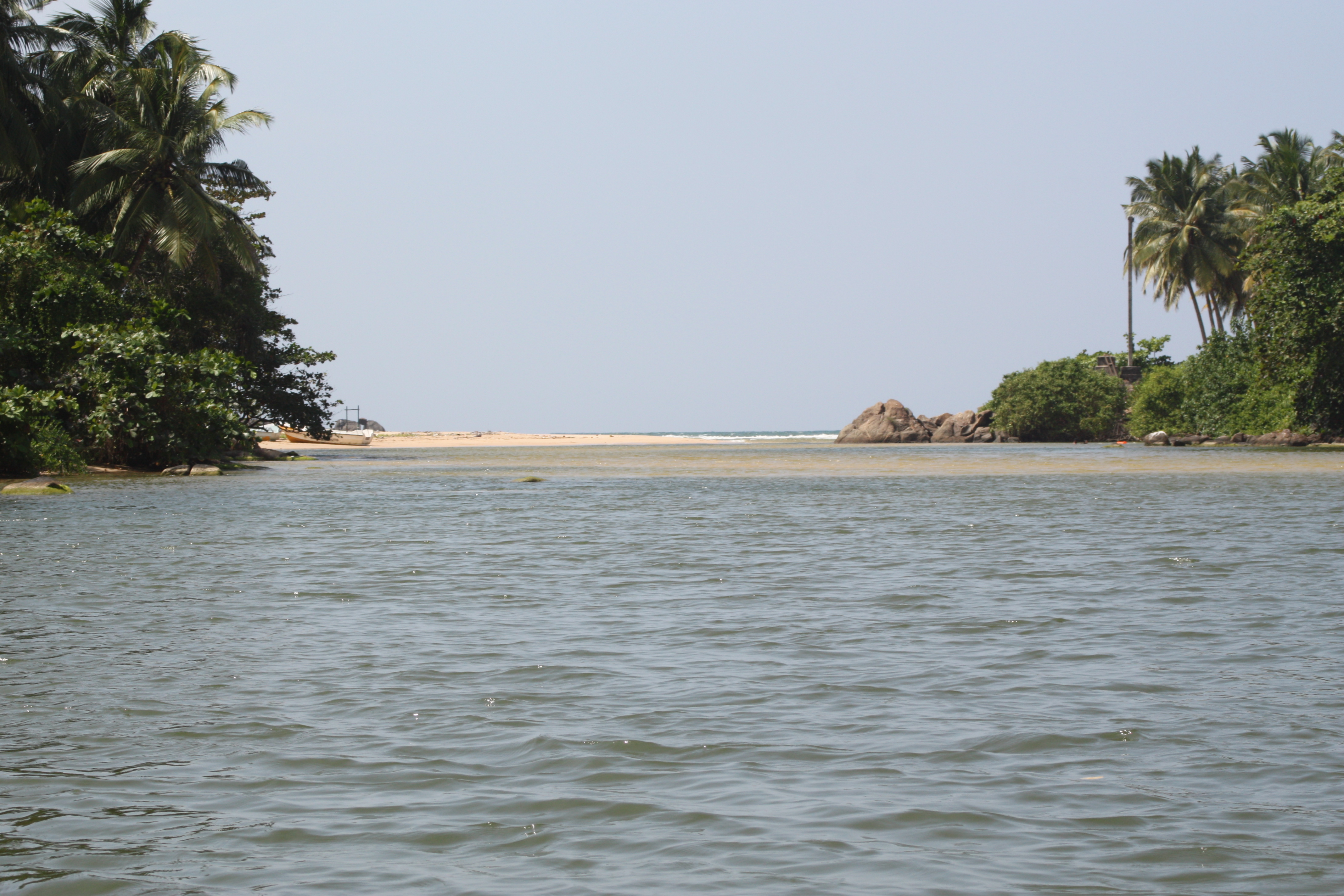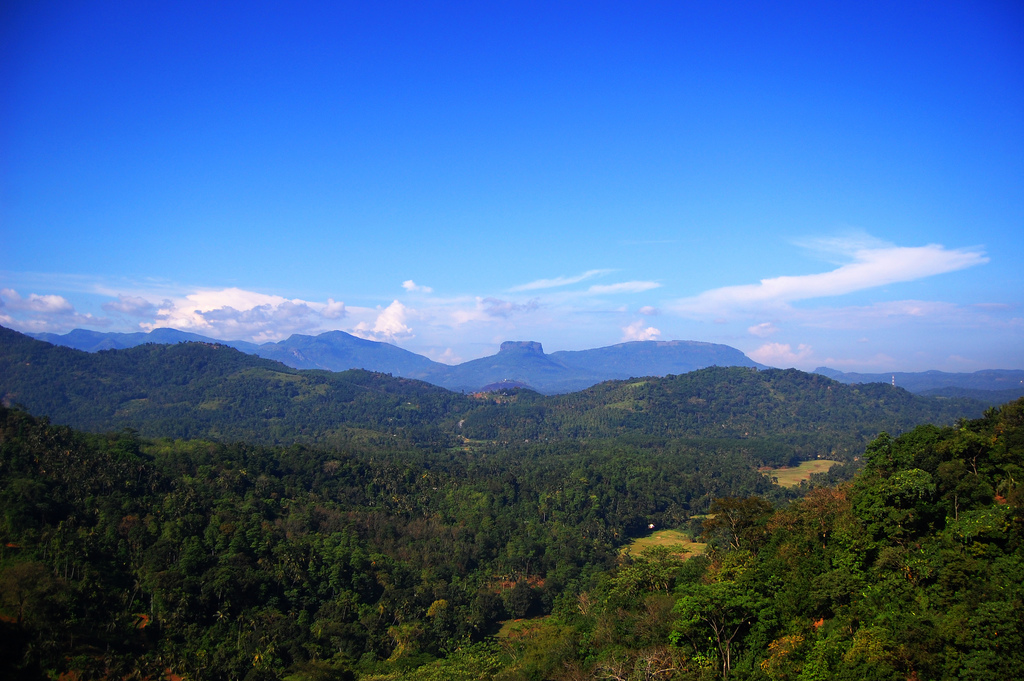|
Kothduwa Temple
The Kothduwa temple, or Koth Duwa Raja Maha Viharaya, is a Buddhist temple located on Kothduwa Island on the Madu Ganga in southern Sri Lanka. The island is located in Galle District of the Southern Province, Sri Lanka, Southern Province approximately north of Galle and south of Colombo. The temple is believed to have once sheltered the sacred relic of the tooth of the Buddha, circa 340 CE. The Bodhi tree on the island was planted from a bud of the Jaya Sri Maha Bodhi by Deva Pathiraja, minister to King Parakramabahu IV of Dambadeniya, Parakramabahu IV. Location The temple and the island on which it is located both lie within the Maduganga Estuary. Kothduwa is one of 15 islands within the estuary. The biodiversity of the wetlands surrounding the temple is exceptional and 111 species of birds and 248 species of vertebrates have been recorded in the area. In 2006, the Department of Wildlife Conservation declared 2,600 hectares of the estuary a wildlife sanctuary. In 2003, 915 ... [...More Info...] [...Related Items...] OR: [Wikipedia] [Google] [Baidu] |
Madu Ganga
Madu Ganga is a minor watercourse which originates near Uragasmanhandiya in the Galle District of Sri Lanka, before widening into the Madu Ganga Lake at Balapitiya. The river then flows for a further a before draining into the Indian Ocean. It is located south of Colombo and north of Galle.many foreigners visit to see beauty of the madu river via boat safari .if you visit to downsouth in srilanka do not forget to visit madu river .you can get madu river boat ride contaking this number 077-5989311 . The Buddhist Amarapura Nikaya sect had its first ''upasampada'' (higher ordination ceremony) on a fleet of boats anchored upon it in 1803. The Buddhist Kothduwa temple is situated on an isolated island in the lake. Madu Ganga Lake, together with the smaller Randombe Lake, to which it is connected by two narrow channels, forms the Madu Ganga wetland. It's estuary and the many mangrove islets on it constitute a complex coastal wetland ecosystem. It has a high ecological, biological ... [...More Info...] [...Related Items...] OR: [Wikipedia] [Google] [Baidu] |
Maduganga Estuary
Madu Ganga is a minor watercourse which originates near Uragasmanhandiya in the Galle District of Sri Lanka, before widening into the Madu Ganga Lake at Balapitiya. The river then flows for a further a before draining into the Indian Ocean. It is located south of Colombo and north of Galle.many foreigners visit to see beauty of the madu river via boat safari .if you visit to downsouth in srilanka do not forget to visit madu river .you can get madu river boat ride contaking this number 077-5989311 . The Buddhist Amarapura Nikaya sect had its first ''upasampada'' (higher ordination ceremony) on a fleet of boats anchored upon it in 1803. The Buddhist Kothduwa temple is situated on an isolated island in the lake. Madu Ganga Lake, together with the smaller Randombe Lake, to which it is connected by two narrow channels, forms the Madu Ganga wetland. It's estuary and the many mangrove islets on it constitute a complex coastal wetland ecosystem. It has a high ecological, biological an ... [...More Info...] [...Related Items...] OR: [Wikipedia] [Google] [Baidu] |
Kotte Kingdom
The Kingdom of Kotte ( si, කෝට්ටේ රාජධානිය, Kottay Rajadhaniya), named after its capital, Kotte, was a Sinhalese kingdom that flourished in Sri Lanka during the 15th century. Kotte, under the rule of Ming-backed Parakramabahu VI, conquered the Jaffna kingdom and the Vanni principalities, and brought the country under one flag. It led to a punitive invasion against the Vijayanagar dynasty and captured a port, which was converted to a trade route. The Kotte Kingdom was largely dissolved during the Sinhalese-Portuguese War, as it faced attacks from rival Sinhalese kingdoms, the Kingdom of Sitawaka and Kingdom of Kandy. Dom João Dharmapala handed it over to the Portuguese, thus leading to the formation of Ceylon. The remainder was annexed into Sitwaka and Kandy. Etymology The term ''Kotte'' is said to have derived from the Sinhalese word ''kotta'' (කෝට්ට) and Tamil word ''kōttei'' which mean fortress.The word ''Kotte'' was intro ... [...More Info...] [...Related Items...] OR: [Wikipedia] [Google] [Baidu] |
Kingdom Of Sitawaka
The Kingdom of Sitawaka ( si, සීතාවක, ta, சீீீதாவாக்கை இராசதானி) was a kingdom located in south-central Sri Lanka. It emerged from the division of the Kingdom of Kotte following the Spoiling of Vijayabahu in 1521. Over the course of the next seventy years it came to dominate much of the island. Sitawaka also offered fierce resistance to the Portuguese, who had arrived on the island in 1505. Despite its military successes, Sitawaka remained unstable, having to contend with repeated uprisings in its restive Kandyan territories, as well as a wide-ranging and often devastating conflict with the Portuguese. Sitawaka disintegrated soon after the death of its last king Rajasimha I in 1593. History Foundation The Kingdom of Kotte had been the major power in western Sri Lanka since its foundation in the early 15th century; under Parakaramabahu VI, the polity has been the last to unite the entirety of the island of Sri Lanka under ... [...More Info...] [...Related Items...] OR: [Wikipedia] [Google] [Baidu] |
Trincomalee
Trincomalee (; ta, திருகோணமலை, translit=Tirukōṇamalai; si, ත්රිකුණාමළය, translit= Trikuṇāmaḷaya), also known as Gokanna and Gokarna, is the administrative headquarters of the Trincomalee District and major resort port city of Eastern Province, Sri Lanka. Located on the east coast of the island overlooking the Trincomalee Harbour, north-east of Colombo, south-east of Jaffna and miles north of Batticaloa, Trincomalee has been one of the main centres of Sri Lankan Tamil language speaking culture on the island for over two millennia. With a population of 99,135, the city is built on a peninsula of the same name, which divides its inner and outer harbours. People from Trincomalee are known as Trincomalians and the local authority is Trincomalee Urban Council. Trincomalee city is home to the famous Koneswaram temple from where it developed and earned its historic Tamil name ''Thirukonamalai''. The town is home to other hist ... [...More Info...] [...Related Items...] OR: [Wikipedia] [Google] [Baidu] |
Prince Danthakumara
A prince is a male ruler (ranked below a king, grand prince, and grand duke) or a male member of a monarch's or former monarch's family. ''Prince'' is also a title of nobility (often highest), often hereditary, in some European states. The female equivalent is a princess. The English word derives, via the French word ''prince'', from the Latin noun , from (first) and (head), meaning "the first, foremost, the chief, most distinguished, noble ruler, prince". Historical background The Latin word (older Latin *prīsmo-kaps, literally "the one who takes the first lace/position), became the usual title of the informal leader of the Roman senate some centuries before the transition to empire, the ''princeps senatus''. Emperor Augustus established the formal position of monarch on the basis of principate, not dominion. He also tasked his grandsons as summer rulers of the city when most of the government were on holiday in the country or attending religious rituals, and, for ... [...More Info...] [...Related Items...] OR: [Wikipedia] [Google] [Baidu] |
Princess Hemamali
Princess is a regal rank and the feminine equivalent of prince (from Latin '' princeps'', meaning principal citizen). Most often, the term has been used for the consort of a prince, or for the daughter of a king or prince. Princess as a substantive title Some princesses are reigning monarchs of principalities. There have been fewer instances of reigning princesses than reigning princes, as most principalities excluded women from inheriting the throne. Examples of princesses regnant have included Constance of Antioch, princess regnant of Antioch in the 12th century. Since the President of France, an office for which women are eligible, is '' ex-officio'' a Co-Prince of Andorra, then Andorra could theoretically be jointly ruled by a princess. Princess as a courtesy title Descendants of monarchs For many centuries, the title "princess" was not regularly used for a monarch's daughter, who, in English, might simply be called "Lady". Old English had no female equivalent of ... [...More Info...] [...Related Items...] OR: [Wikipedia] [Google] [Baidu] |
Kalinga (historical Kingdom)
Kalinga (Sanskrit: ), is a historical region of India. It is generally defined as the eastern coastal region between the Mahanadi and the Godavari rivers, although its boundaries have fluctuated with the territory of its rulers. The core territory of Kalinga now encompasses a large part of Odisha and northeastern part of Andhra Pradesh. At its widest extent, the Kalinga region also included parts of present-day Chhattisgarh, extending up to Amarkantak in the west. The Kalingas have been mentioned as a major tribe in the legendary text ''Mahabharata''. In the 3rd century BCE, the region came under Mauryan control as a result of the Kalinga War. It was subsequently ruled by several regional dynasties whose rulers bore the title ''Kalingādhipati'' ("Lord of Kalinga"); these dynasties included Mahameghavahana, Vasishtha, Mathara, Pitrbhakta, Shailodbhava, Somavamshi, and Eastern Ganga. The medieval era rulers to rule over the Kalinga region were the Suryavamsa Gajapatis, Bho ... [...More Info...] [...Related Items...] OR: [Wikipedia] [Google] [Baidu] |
King Guhasiva
King is the title given to a male monarch in a variety of contexts. The female equivalent is queen, which title is also given to the consort of a king. *In the context of prehistory, antiquity and contemporary indigenous peoples, the title may refer to tribal kingship. Germanic kingship is cognate with Indo-European traditions of tribal rulership (c.f. Indic '' rājan'', Gothic '' reiks'', and Old Irish ''rí'', etc.). *In the context of classical antiquity, king may translate in Latin as '' rex'' and in Greek as ''archon'' or ''basileus''. *In classical European feudalism, the title of ''king'' as the ruler of a ''kingdom'' is understood to be the highest rank in the feudal order, potentially subject, at least nominally, only to an emperor (harking back to the client kings of the Roman Republic and Roman Empire). *In a modern context, the title may refer to the ruler of one of a number of modern monarchies (either absolute or constitutional). The title of ''king' ... [...More Info...] [...Related Items...] OR: [Wikipedia] [Google] [Baidu] |
Poya
Poya is the name given to the Lunar monthly Buddhist holiday of Uposatha in Sri Lanka, where it is a civil and bank holiday. Full moon day is normally considered as the poya day in every month. Poya A Poya occurs every full moon."Sri Lanka Bank Holidays, Public Holidays & Full Moon Poya Days" (Online Calendar for years 2003–2011), Ministry of Public Administration and home Affairs, Independence Square, Colombo 7, Sri Lanka. Uposatha is important to Buddhists all around the world, who have adopted the for their religious observances. Owing to the moon's fullness of size as well as its effulgence, the full moon day is treated as the most auspicious o ... [...More Info...] [...Related Items...] OR: [Wikipedia] [Google] [Baidu] |
Mangrove
A mangrove is a shrub or tree that grows in coastal saline water, saline or brackish water. The term is also used for tropical coastal vegetation consisting of such species. Mangroves are taxonomically diverse, as a result of convergent evolution in several plant families. They occur worldwide in the tropics and subtropics and even some temperate coastal areas, mainly between latitudes 30° N and 30° S, with the greatest mangrove area within 5° of the equator. Mangrove plant families first appeared during the Late Cretaceous to Paleocene epochs, and became widely distributed in part due to the plate tectonics, movement of tectonic plates. The oldest known fossils of Nypa fruticans, mangrove palm date to 75 million years ago. Mangroves are salt-tolerant trees, also called halophytes, and are adapted to live in harsh coastal conditions. They contain a complex salt filtration system and a complex root system to cope with saltwater immersion and wave action. They are ad ... [...More Info...] [...Related Items...] OR: [Wikipedia] [Google] [Baidu] |

.png)




.png)
